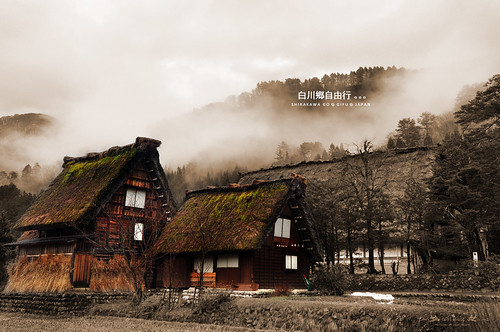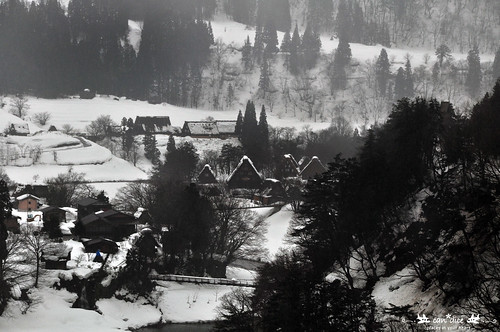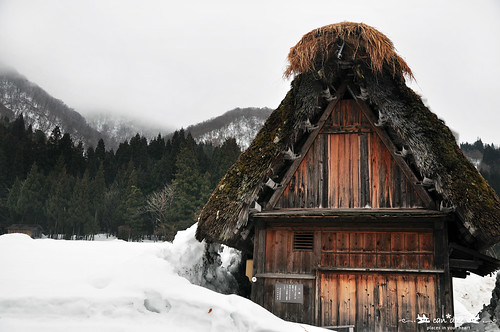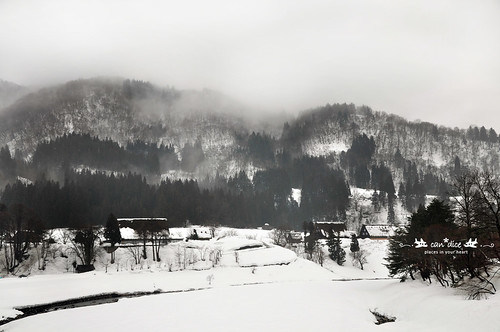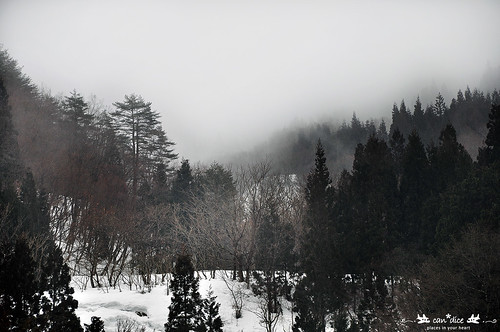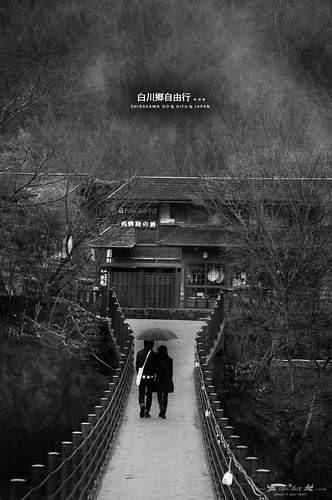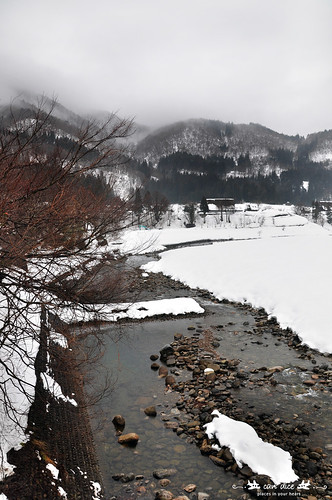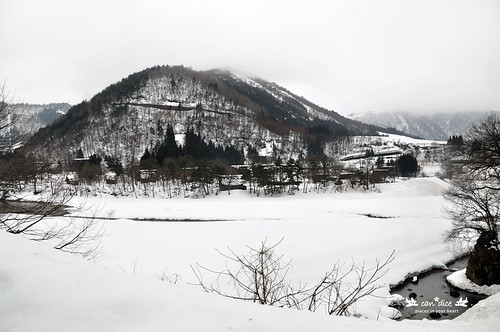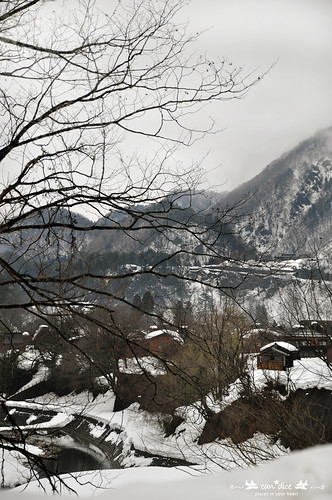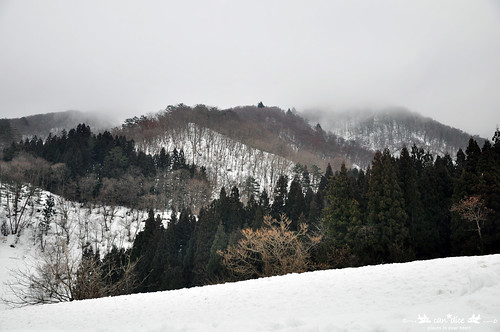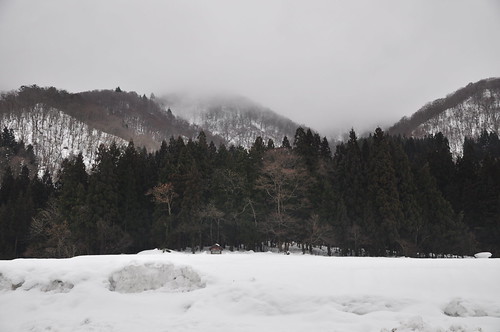I have something to announce! I am officially a NEET now. And that’s probably why there will be updates again and I should probably change the name of this blog to something more appropriate. Something like The Long Overdue Posts perhaps..or Everything Outdated haha.
Anyway the post’s not about my complaints and rantings. More importantly, Shirakawa Go needs a better mention.
The photos here were taken during Late Winter 2010 and Early Winter 2011. (Yes did I mention it was long over due?)
If you haven’t heard of Shirakawa Go, you probably should visit it sometime. The historic villages there are one of Japan’s UNESCO World Heritage sites. Truth be told I chanced upon this area while researching for my Free & Easy trip in Japan.
I think I shall let the images do the talking. You can find more of the dry stuff (information) at the end of the post.
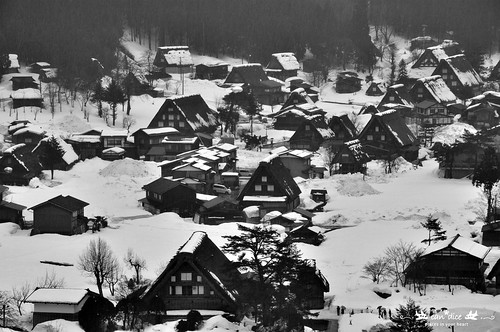 Village captured at one of the view points. The thatched roof house with 5 windows is a monestry(if i interpreted my guide correctly)
Village captured at one of the view points. The thatched roof house with 5 windows is a monestry(if i interpreted my guide correctly)
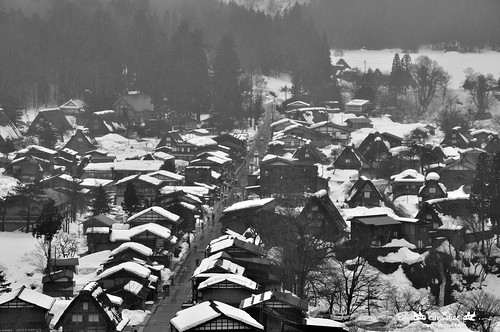 The village is well known for the houses that are constructed in an architectural style known as gasshō-zukuri (合掌造り). The Gassho-zukuri, or “prayer-hands construction” style as Wikipedia calls it, refers to the thatched and steeply slanting roof that resembles two hands being joined together, as if in a prayer. The roof is designed to allow the houses to withstand and shed the weight of the region’s heavy snowfalls in winter (like now.. er I mean like when I visited).
The village is well known for the houses that are constructed in an architectural style known as gasshō-zukuri (合掌造り). The Gassho-zukuri, or “prayer-hands construction” style as Wikipedia calls it, refers to the thatched and steeply slanting roof that resembles two hands being joined together, as if in a prayer. The roof is designed to allow the houses to withstand and shed the weight of the region’s heavy snowfalls in winter (like now.. er I mean like when I visited).
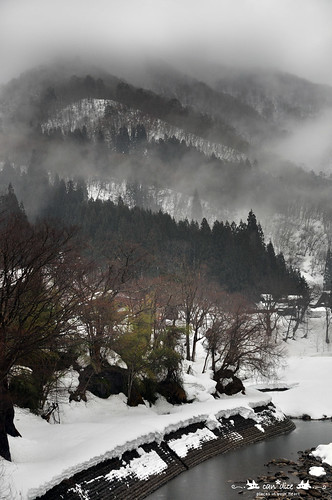 I loved how the mountains look exactly like Chinese calligraphy art
I loved how the mountains look exactly like Chinese calligraphy art
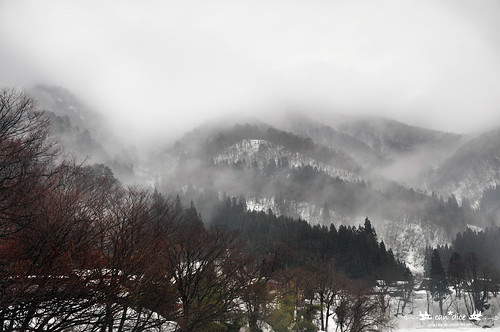 It was actually drizzling when I was there and i remember pretty clearly the hassle of taking good photos while trying to protect your camera from the cold and water and trying to balance your umbrella somewhere plus trying to walk in snow boots. But it was all pretty worth it!
It was actually drizzling when I was there and i remember pretty clearly the hassle of taking good photos while trying to protect your camera from the cold and water and trying to balance your umbrella somewhere plus trying to walk in snow boots. But it was all pretty worth it!
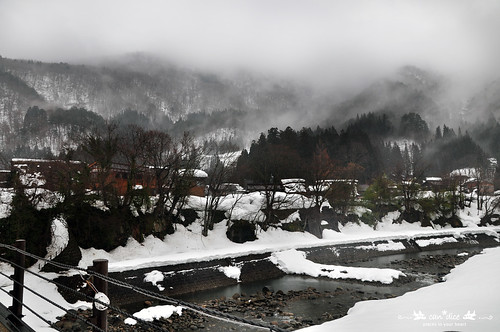 The river doesn’t freeze. Looks awesome with thick blankets of snow.
The river doesn’t freeze. Looks awesome with thick blankets of snow.
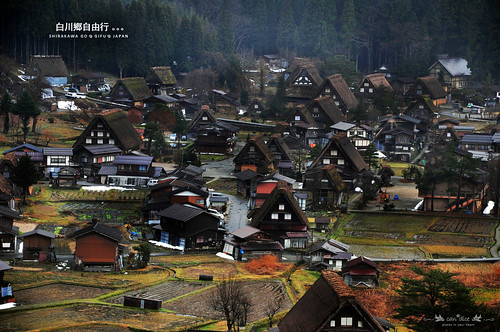
This one’s taken during early winter in late December. There wern’t much snow yet and I was oddly disappointed. I had revisited this area in hope of seeing the snow scenery again. 2 days later, I departed for Tokyo… and it snowed! FML!
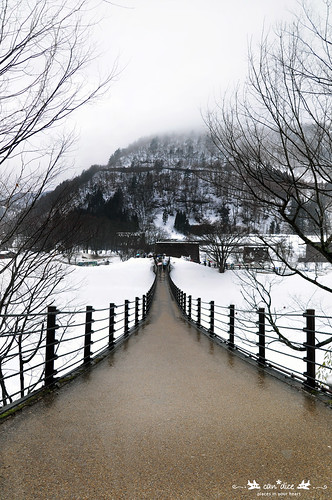 The bridge leads to the Tourist Center. I remember a horde of tourists from North Asia flooding the bridge. I stood there in the rain and practically froze for about 5 mins before getting a shot with lesser people.
The bridge leads to the Tourist Center. I remember a horde of tourists from North Asia flooding the bridge. I stood there in the rain and practically froze for about 5 mins before getting a shot with lesser people.
Some of the Gassho villages Minshuku (民宿) are open for tourists to stay to get the ultimate experience. I did not though cos I was terribly scared of the cold. I based myself in the town below called Hida- Takayama . The backpackers I was staying at organised daily tours up to Shirakawa Go and they are relatively cheaper than the usual Nohi bus that runs daily. When you’re up there, be sure to try the famous Hida Beef Croquette (200 – 350 Yen each) or you could also sink your teeth into some ソフトクリーム (literaly soft cream or ice cream) and freeze your brains out – like i did! YUM!
If you’re heading to Hida- Takayama for Shirakawa Go from any major cities of Japan, you’ll need to transfer at Nagoya, to a standard train called the Wide View Hida (ワイドビューひだ) Limited Express, bound for Hida -Takayama. Be sure to check the timings of this train as the frequency is not high. At most you’ll get 1 train an hour. If you JUST missed it, you’ll have to wait in the cold (like I did! haha)
The ride itself takes about 2.5 hours but it is definitely worth it. Take it during the day and you’ll be able to enjoy the mountainous beauty of that region. For a city chick like me, the mountains and rivers are awesome. You can catch a glimpse of it on this video. For photography buffs like me, make sure you take a late morning or early noon train as you’ll get those irritating reflection on the windows by the time the outside is darker than the inside. Anyway, the best part of the ride is that it is included in the JR pass so JRPass holders will love this.
